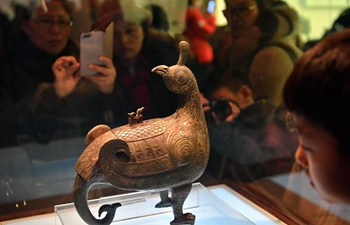TAIPEI, Feb. 9 (Xinhua) -- The ratio of the working-age population to the entire population in Taiwan fell from 74.22 percent in 2012 to 72.62 percent at the end of 2018, indicating a growing burden on the island's workforce, according to its interior affairs authority.
Taiwan had a registered population of 23.59 million as of the end of 2018, and the working-age population are those aged between 15 and 64, the authority said in a statement.
Moreover, Taiwan's aging rate, or the ratio of people aged 65 and above, climbed from 10.43 percent in 2008 to 14.56 percent in 2018, it said. The elderly population reached 3.43 million at the end of 2018.
The labels of aging, aged and super-aged societies refer to those with an aging rate above 7 percent, 14 percent and 20 percent, respectively.
Taiwan reached the threshold of an "aged society" in March 2018 when the aging rate stood at 14.05 percent.
Another crucial barometer, the aging index, which is calculated as the number of people aged 65 or above for every 100 people under the age of 15, was 112.64 at the end of 2018, up 6.94 from the previous year, according to the statement.
An aging index over 100 means that there are more elderly people than young people. Taiwan's aging index exceeded 100 in 2017 for the first time.

















